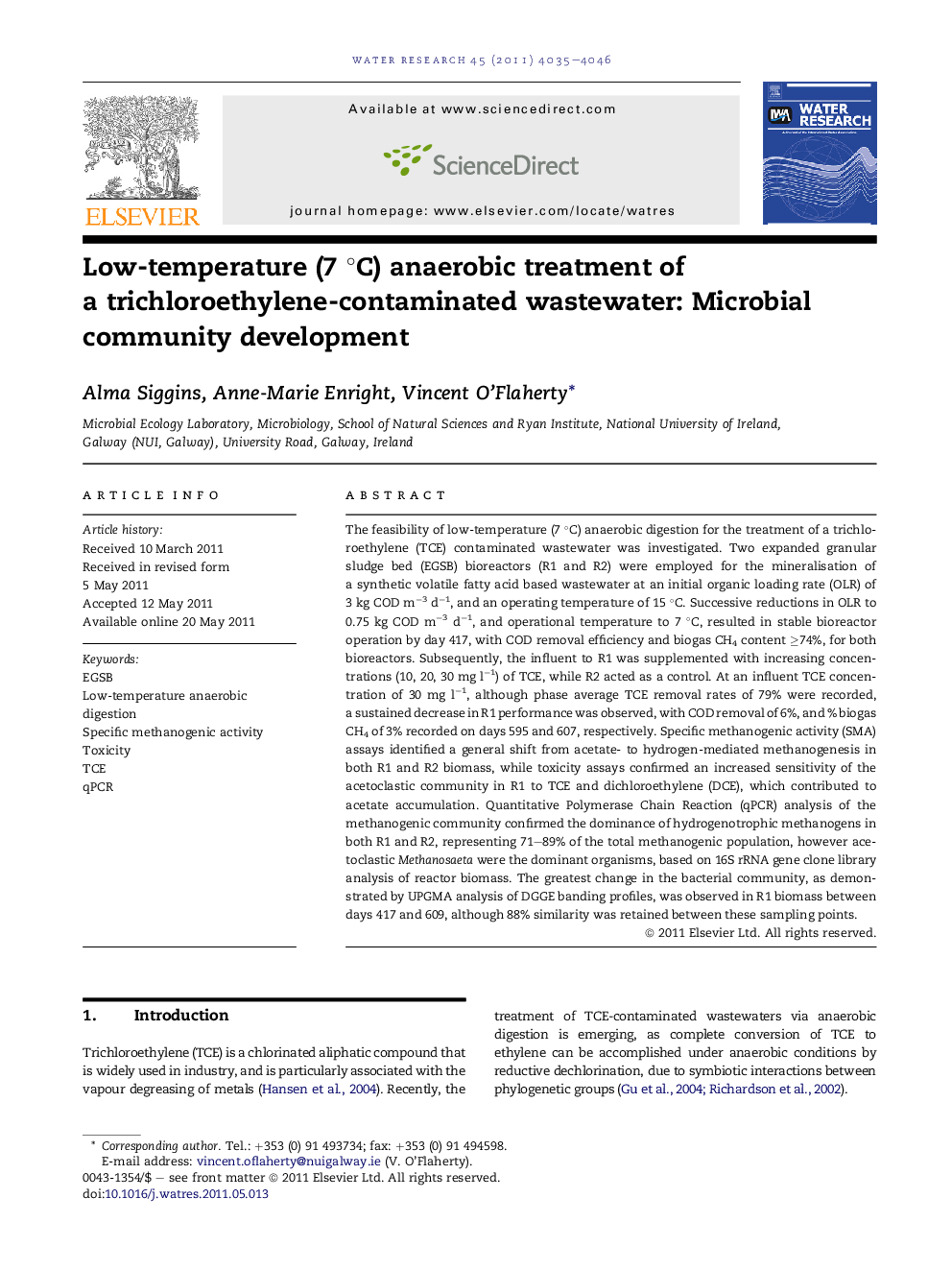| کد مقاله | کد نشریه | سال انتشار | مقاله انگلیسی | نسخه تمام متن |
|---|---|---|---|---|
| 4484104 | 1316909 | 2011 | 12 صفحه PDF | دانلود رایگان |

The feasibility of low-temperature (7 °C) anaerobic digestion for the treatment of a trichloroethylene (TCE) contaminated wastewater was investigated. Two expanded granular sludge bed (EGSB) bioreactors (R1 and R2) were employed for the mineralisation of a synthetic volatile fatty acid based wastewater at an initial organic loading rate (OLR) of 3 kg COD m−3 d−1, and an operating temperature of 15 °C. Successive reductions in OLR to 0.75 kg COD m−3 d−1, and operational temperature to 7 °C, resulted in stable bioreactor operation by day 417, with COD removal efficiency and biogas CH4 content ≥74%, for both bioreactors. Subsequently, the influent to R1 was supplemented with increasing concentrations (10, 20, 30 mg l−1) of TCE, while R2 acted as a control. At an influent TCE concentration of 30 mg l−1, although phase average TCE removal rates of 79% were recorded, a sustained decrease in R1 performance was observed, with COD removal of 6%, and % biogas CH4 of 3% recorded on days 595 and 607, respectively. Specific methanogenic activity (SMA) assays identified a general shift from acetate- to hydrogen-mediated methanogenesis in both R1 and R2 biomass, while toxicity assays confirmed an increased sensitivity of the acetoclastic community in R1 to TCE and dichloroethylene (DCE), which contributed to acetate accumulation. Quantitative Polymerase Chain Reaction (qPCR) analysis of the methanogenic community confirmed the dominance of hydrogenotrophic methanogens in both R1 and R2, representing 71–89% of the total methanogenic population, however acetoclastic Methanosaeta were the dominant organisms, based on 16S rRNA gene clone library analysis of reactor biomass. The greatest change in the bacterial community, as demonstrated by UPGMA analysis of DGGE banding profiles, was observed in R1 biomass between days 417 and 609, although 88% similarity was retained between these sampling points.
► At 7 °C, up to 98% TCE removal and 92% COD removal when influent TCE was 20 mg l−1.
► Emergence of hydrogenotrophic methanogens indicated by SMA and qPCR.
► Moving-window analysis indicated TCE-inhibition of archaeal community development.
► Disappearance of Thermotogae species and emergence of Firmicutes species observed.
Journal: Water Research - Volume 45, Issue 13, July 2011, Pages 4035–4046